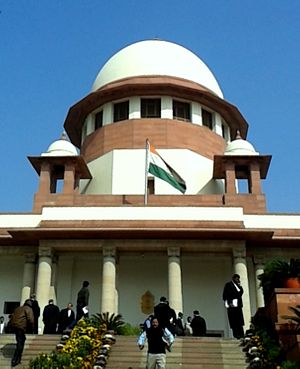Beginning with the battle against dowry deaths and related violence in the 1970s, feminist groups in India have consistently expressed their displeasure at the lack of adequate provisions for protecting women in the domestic sphere. The Protection of Women Against Domestic Violence Act (2005) was passed in October 2006, after decades of lobbying by legal and women’s rights groups, following multiple drafts and instances of tabling. It intended to provide women protection against multiple forms of abuse within the domestic environment, including violence that befell defenders or dependents of the victims, and non-physical forms of abuse, like cutting off access to assets or finances.
In the decade since its implementation, critics have suggested that the law does not quite have the force it would appear to given the increasing number of cases filed under its aegis. Court delays and legal procedures that spill into years, in addition to a lack of well-trained and resourced protection officers who can actually implement the required outreach programs to encourage reporting have been repeatedly identified as among the problems with implementation. On top of this, men’s rights groups have at multiple points expressed outrage, declaring the law to be anti-men.
In this context, a ruling by the Supreme Court in October 2016 has possibly presented further complications. Provision (2q) of the Act, which indicates whom the complaint can be filed against, now has had the words “adult male” struck down – effectively allowing women to file complaints against other women accusing them of violence. The bench ruled in favor of this by making the argument that perpetrators and abettors of domestic violence can be women as well. They found the words “adult male” thereby contrary to the objectives of the law. The remaining part of the legislation was effectively left untouched.
While it is true that women face abuse from other women of the spouse’s family, there are several unintended consequences that may result from the apparent gender neutrality of this provision. For one thing, given the disproportionate amount of power men wield in the Indian household, this could result in them having the ability to levy counter-cases upon the women. By placing the mother-in-law in the position of the aggrieved, the men could still effectively dispossess their wives from the home or turn the abuse complaint on its head. This was identified as a problem years ago, when the framing of the law was still under debate and ultimately resulted in the inclusion of the words “adult male.”
There are other ways of ensuring that the female abettors of domestic violence do not go unpunished. For instance, as prominent lawyer Indira Jaising has pointed out in the past, a proviso was added to the definition of “respondent” in an earlier draft of this bill, which allowed women to file complaints against relatives of the men in addition to the abusive husband. This would allow joint cases of abuse to be prosecuted. Lawyers have also argued that since overwhelmingly the abuse tends to be either instigated or supported by the husband, the cases where it was solely at the hands of the female relative could be handled on a case-by-case basis.
While it remains to be seen how much the fears of power abuse and retaliation will be realized with this change, it does certainly hint at a lack of understanding with respect to the complex nature of the phenomenon of domestic violence in India and the asymmetries involved.

































